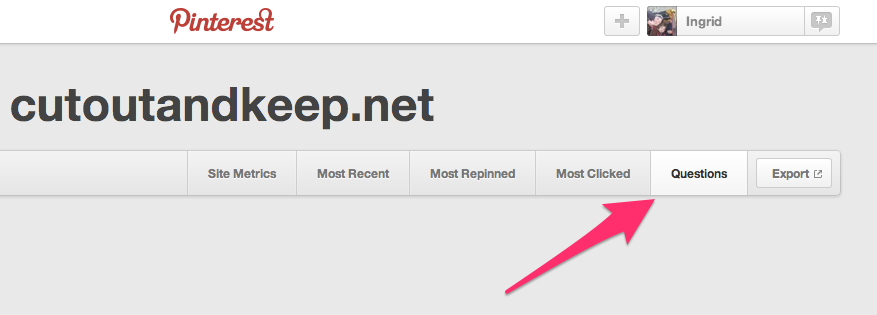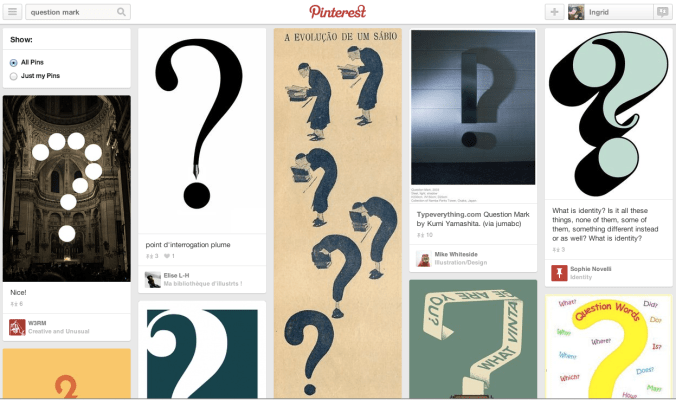Jelly, Quora, Yahoo (sometimes to absurd ends), and others have looked to question-and-answer services as a way to boost user engagement and advance conversations. Now another player could be entering the fray: Pinterest has confirmed to us it is testing out a new Q&A feature, too.
“We’re always gathering feedback from Pinners to make Pins more useful,” a spokesperson tells us. “We’re currently testing the ability to ask and answer questions in a more structured way on Pins, with a small group of Pinners. We don’t have any additional details to share at this time, but we’ll keep you posted.”
The feature was first pointed out to us by Tom Waddington — a UK-based developer and designer who has been known to spot other upcoming social network developments by looking behind the scenes.
In a blog post, he writes that he got his first hint of it while digging through the Pinterest analytics for Cut Out + Keep, a craft tutorial community that he co-founded, and noticing a new option called “Questions.”
It linked only to a blank page with a Questions tab:

But it tipped him off to look through Pinterest’s code to see what else was there. “I took a look through the code, and found a whole load of references to a feature that looks almost ready for release,” he writes.
There is code in there for users ask questions about the pins that they are viewing, and code for the original Pinner to get a notification to answer the question. Among the 100 or so references to Questions is code for Questions to appear on the web site, as well as iOS and Android apps.
(It’s not clear whether that “original” will be the person you follow who posted something, the very first person to pin something to Pinterest, or even the originator of the image in question — eg, Who will answer my questions about pickling rainbow chard: my friend Jacqueline, her connection Mattie, or theyummybits.com?)
And it looks like Pinterest will try to detect whether a user is asking a question rather than simply commenting, and will be prompted to confirm that is indeed what it is. “All the usual functions to delete, report and like/unlike questions are present in the code,” he writes.
Of course, it’s not a given that just because you can use social networks or any website to answer questions, you will. Facebook had high hopes for its own Questions feature, which lasted for all of two years before it started to shut most of the functionality down. Google Answers also been retired. It will be worth watching how new app Jelly — perhaps a closer comparison to Pinterest’s Q&A ethos, given the visual anchor — will develop longer term with user traction.
On the other hand, what’s interesting about a Q&A feature is that it is one more way, in addition to basic comments, that users will be able to put more text into a site that has been largely built around images.
It will also encourage people to engage more with the content — engagement being one of the key metrics for social media sites to demonstrate how attentive their monthly active users really are.
It also helps pin down (pun!) and make more useful something that people have already been doing on the site informally: asking questions through the comments section. If you are a brand, this could end up being a golden opportunity to connect with customers. It’s the more open-ended counterpart compared to some of the other features like Guided Search, which “steers” you in certain directions as it focuses your searches on the site.
